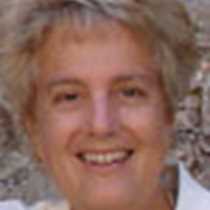Fogo & Brava, the Cape Verde Islands
According to local legend, when God was finished with his Creation, he bushed his hands together and the morsels of soil that fell into the oceans below formed the Cape Verde Islands. This widely spaced archipelago of ten islands, five islets and various rocks, lie between 460 to 830 km west of Senegal, in Africa. The geological history of this volcanic island group varies from 26 million years old for the eastern islands, to barely a million years ago for the western most islands of Fogo and Brava.
This morning we had three options for a tour around Fogo – “Fire” Island. My group drove two-thirds the way around the island towards Cova Figuiera on hand-laid cobbled roads. The route took us past small villages and farms with terraced fields and dry-stone animal enclosures clinging to the sides of the steep slopes of Pico de Fogo, one of the most spectacular volcanic cones in the world. Barren, jagged black lava fields punctuated the landscape, cutting through grassy fields, baked dry by the dusty hot northeast trades winds blowing off the Sahara. While cashew and mango trees, bananas and papayas ringed the farms, various species of acacia trees grow wild across the slopes offering a shady refuge for the goats that produce the island’s famous soft cheeses. On the north side of the island, Alexander’s kestrels soared skyward on the updrafts from the cliffs below our vantage point, while the grey-headed kingfishers sat sedately on the single telephone cable that bordered the road. A second group of guests set off in small minivans for the fishing village of Salinas where they strolled through the town. A third and much larger group visited the caldera of this still active volcano. The central cone rises to a height of 2,829 m. The small village of Chã das Caldeiras at the base of the caldera is famous for its grape vines that grow on the dark volcanic soil. Everyone was given the opportunity of tasting the island’s excellent wine, goat cheese and famous fish cakes before boarding the zodiacs to return to the ship. All three tours were accompanied by a Peace Corps volunteer. These three inspirational young women added a tremendous amount to our all too brief visit to the island.
After a late lunch aboard, National Geographic Explorer repositioned to the nearby island of Brava where we had the opportunity to either take a Zodiac tour of the dramatic coastline or do a spot of swimming and snorkeling from our swim platform. Those that chose the cliff-shore tour were joined by a group of Pan-tropical Spotted dolphins and had plenty of opportunity to observe the Red-billed Tropic birds against a spectacular backdrop of this island’s soaring sandstone cliffs.




